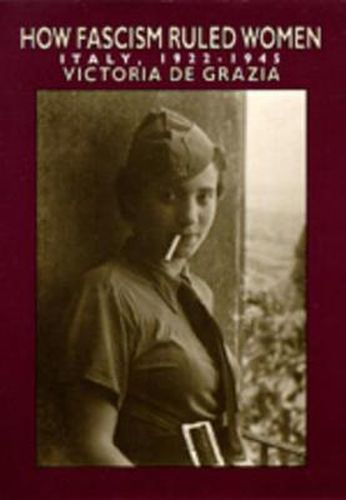Readings Newsletter
Become a Readings Member to make your shopping experience even easier.
Sign in or sign up for free!
You’re not far away from qualifying for FREE standard shipping within Australia
You’ve qualified for FREE standard shipping within Australia
The cart is loading…






Italy has been made; now we need to make the Italians, goes a familiar Italian saying. Mussolini was the first head of state to include women in this mandate. How the fascist dictatorship defined the place of women in modern Italy and how women experienced the Duce’s rule are the subjects of Victoria de Grazia’s new work. De Grazia draws on an array of sources-memoirs and novels, the images, songs, and events of mass culture, as well as government statistics and archival reports. She offers a broad yet detailed characterization of Italian women’s ambiguous and ambivalent experience of a regime that promised modernity, yet denied women emancipation.
Always attentive to the great diversity among women and careful to distinguish fascist rhetoric from the practices that really shaped daily existence, the author moves with ease from the public discourse about femininity to the images of women in propaganda and commercial culture. She analyzes fascist attempts to organize women and the ways in which Mussolini’s intentions were received by women as social actors. The first study of women’s experience under Italian fascism, this is also a history of the making of contemporary Italian society.
$9.00 standard shipping within Australia
FREE standard shipping within Australia for orders over $100.00
Express & International shipping calculated at checkout
Italy has been made; now we need to make the Italians, goes a familiar Italian saying. Mussolini was the first head of state to include women in this mandate. How the fascist dictatorship defined the place of women in modern Italy and how women experienced the Duce’s rule are the subjects of Victoria de Grazia’s new work. De Grazia draws on an array of sources-memoirs and novels, the images, songs, and events of mass culture, as well as government statistics and archival reports. She offers a broad yet detailed characterization of Italian women’s ambiguous and ambivalent experience of a regime that promised modernity, yet denied women emancipation.
Always attentive to the great diversity among women and careful to distinguish fascist rhetoric from the practices that really shaped daily existence, the author moves with ease from the public discourse about femininity to the images of women in propaganda and commercial culture. She analyzes fascist attempts to organize women and the ways in which Mussolini’s intentions were received by women as social actors. The first study of women’s experience under Italian fascism, this is also a history of the making of contemporary Italian society.